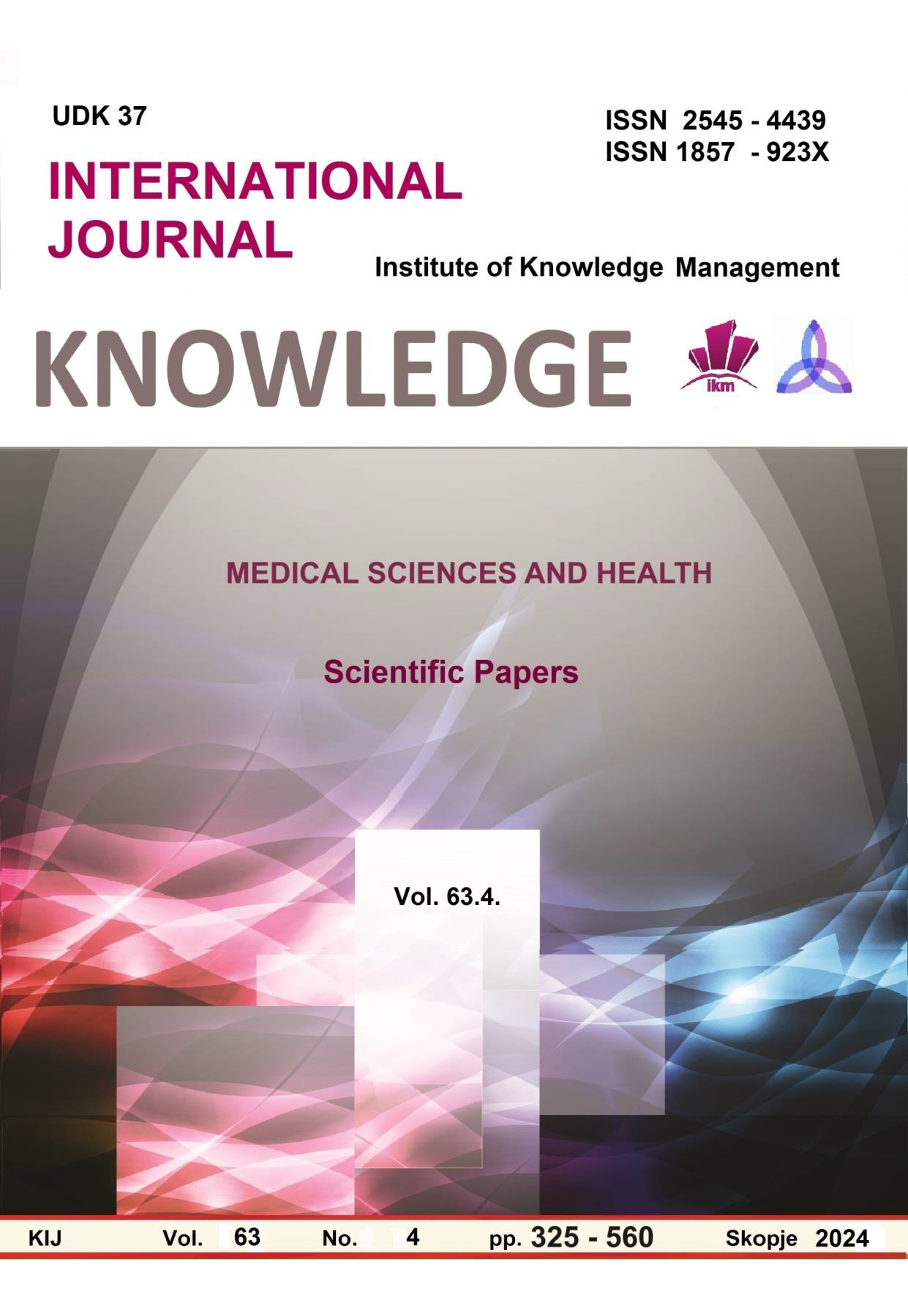RADIOLOGICAL ASSESSMENT OF RIGHT HEART STRAIN AND PULMONARY EMBOLISM SEVERITY USING CTPA METRICS
RADIOLOGICAL ASSESSMENT OF RIGHT HEART STRAIN AND PULMONARY EMBOLISM SEVERITY USING CTPA METRICS
Author(s): Sonja NikolovaSubject(s): Social Sciences, Health and medicine and law
Published by: Scientific Institute of Management and Knowledge
Keywords: Acute pulmonary embolism (APE);Pulmonary arterial obstruction index (PAOI);Right heart failure (RHF);Right atrium (RA);Inferior vena cava contrast reflux (IVC);Computed Tomography Pulmonary Angiograph
Summary/Abstract: Pulmonary thromboembolism (PTE) poses a significant risk of acute right-sided heart failure and mortality. Computed tomography pulmonary angiography (CTPA) serves as the gold standard for assessing acute pulmonary embolism (APE) risk. This study aims to determine the potential risk of acute right-sided heart failure in APE patients through semi-quantitative CTPA measurements, including the pulmonary arterial obstruction index (PAOI) and evaluation of right atrium (RA) dimensions, left atrium (LA) dimensions, RA/LA ratio, and inferior vena cava (IVC) contrast reflux. Method: This retrospective study involved 50 patients, undergoing initial and follow-up CTPA’s at the Institute of Radiology in Skopje, between January 2018 and January 2021, who were initially diagnosed with APE. They all exhibited varied degrees of pulmonary arterial obstruction index, constituting the study group, while their follow-up CT’s after treatment and resolution of emboli, comprised the control group. PAOI was semi-quantitatively correlated with RA and LA dimensions, RA/LA ratio, and IVC contrast reflux using axial CT scans on the initial and follow up CTPA’s. Results: Among the 50 APE patients, 31 were male and 19 were female. Significant positive correlations were observed between PAOI and RA short axis, RA/LA short and long axis ratio, and IVC contrast reflux. Conversely, negative correlations were found between PAOI and LA dimensions. Discussion: The correlations observed between PAOI measurements and cardiac dimensions in APE patients shed light on the condition's hemodynamic implications. A negative correlation with left atrium dimensions suggests reduced left ventricular preload with increasing pulmonary arterial obstruction. Conversely, positive correlations with right atrium dimensions and RA/LA ratio underscore the impact of elevated pulmonary vascular resistance on right heart strain, indicating a heightened risk of right-sided heart failure. The association between PAOI and IVC contrast reflux highlights the significance of venous congestion in APE, further exacerbating right heart strain. These findings emphasize the importance of assessing right heart dimensions and venous congestion in APE prognosis. PAOI, along with these parameters, serve as valuable prognostic indicators, aiding in risk stratification and guiding therapeutic decisions to minimize adverse outcomes in APE patients. Conclusion: PAOI measurements, IVC contrast reflux, RA short axis, and RA/LA short and long axis ratio serve as reliable CT prognostic markers for APE severity, risk of right-sided heart failure, and adverse outcomes. These markers aid in timely diagnosis and therapy selection for APE patients.
Journal: Knowledge - International Journal
- Issue Year: 63/2024
- Issue No: 4
- Page Range: 503-508
- Page Count: 6
- Language: English

